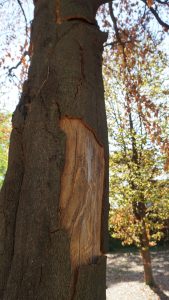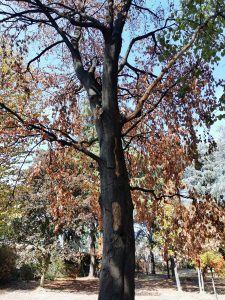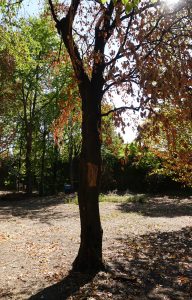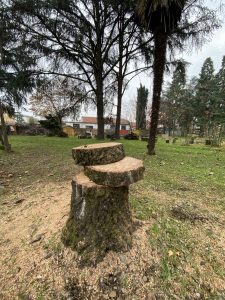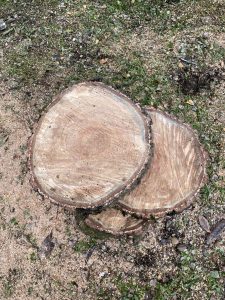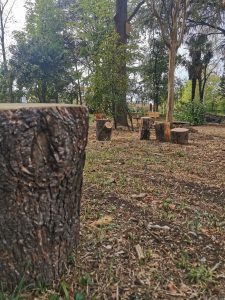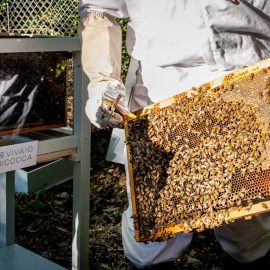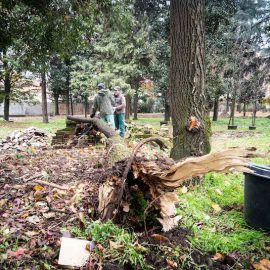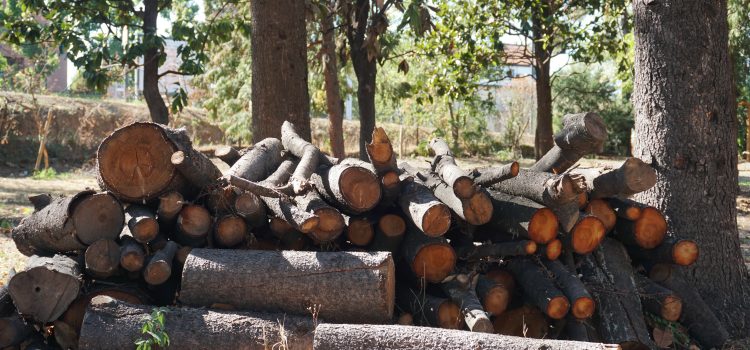
As told in a previous article, the health of the trees in the Vivaio Bicocca is constantly monitored to ensure the safety of the space and its visitors.
In December 2022, following phytostatic surveys – which verify the assessment of plant stability -, some felling was necessary.
These past few years of great drought and even unseasonably extreme temperatures have negatively affected the health of the Vivaio’s specimens. Beeches, birches and some large Atlas cedars had clear signs of death.
How do you monitor the health of a tree?
We used the VTA – Visual Tree Assessment – methodology, through both a visual and instrumental process, to analyze the condition of trees.
This methodology, which is constantly being updated, assesses the structural condition of the tree and is based on the protocol drawn up by the S.I.A. – Società di Arboricoltura Italiana. In this way, it is possible to carry out a stability assessment of the trees with the aim of identifying the level of danger resulting from the probability of failure and to make a prediction of these risks over time, while also providing an indication of the appropriate cultural care and monitoring.
How did the assessment document come about?
Through 4 key steps:
Anamnestic phase: collection of information about the plant and its location
Diagnostic phase: analysis of symptoms present on the tree
Prognostic phase: prediction of the evolution of the disease phenomenon
Therapeutic phase: defining interventions to treat or solve the diagnosed problems
Results
As a result of the investigation of the specimens, more than a dozen plants were found to be in serious condition and were therefore arranged for felling. Most of the plants in the Vivaio suffered desiccation as a result of the adverse weather conditions. Beeches, birches and hornbeams, usually accustomed to very humid and rainfall-prone environments, could not withstand the high temperatures. Other trees, such as a large red oak, suffered attacks by fungi, organisms that cause significant structural damage.
In order to preserve some specimens and avoid future felling, pruning and securing of some branches has been carried out to ensure stability of the trees even in large gusts of wind.
Vivaio Bicocca actions
Life is an endless cycle of renewal and reuse. Following these principles dictated by nature, Vivaio Bicocca wanted to encourage the rebirth of life by promoting the reuse of cut logs, through two solutions: totems and stumps.
Totems are stems, often with branches, cut at a height of about 4 meters, useful for a better understanding of how woodpeckers and xylophagous insects nest in trees.
Stumps are of two types: simple and with discs. The first type is dedicated to xylophages that usually live in the upper soil layer; the second is a structure of about 30 centimeters composed of wooden discs. This encourages the establishment of new xylophagous insects by creating dedicated spaces between the discs, which are excellent for overwintering.
The stumps will also serve for educational purposes. The removable discs, in fact, allow scholars and teachers to examine and illustrate to young and curious people the world that you can find in the trunk of a tree.
Both solutions, totems and stumps, also promote the spread of fungi due to their close proximity to the ground.
The Vivaio reused most of the waste wood from the felling work to create woodpiles, nesting sites and shelter for small animals and saproxylic organisms, as well as to install new wooden seats, which have already been appreciated and used in teaching activities.
Not only new life, but renewed opportunities for study and dissemination.

